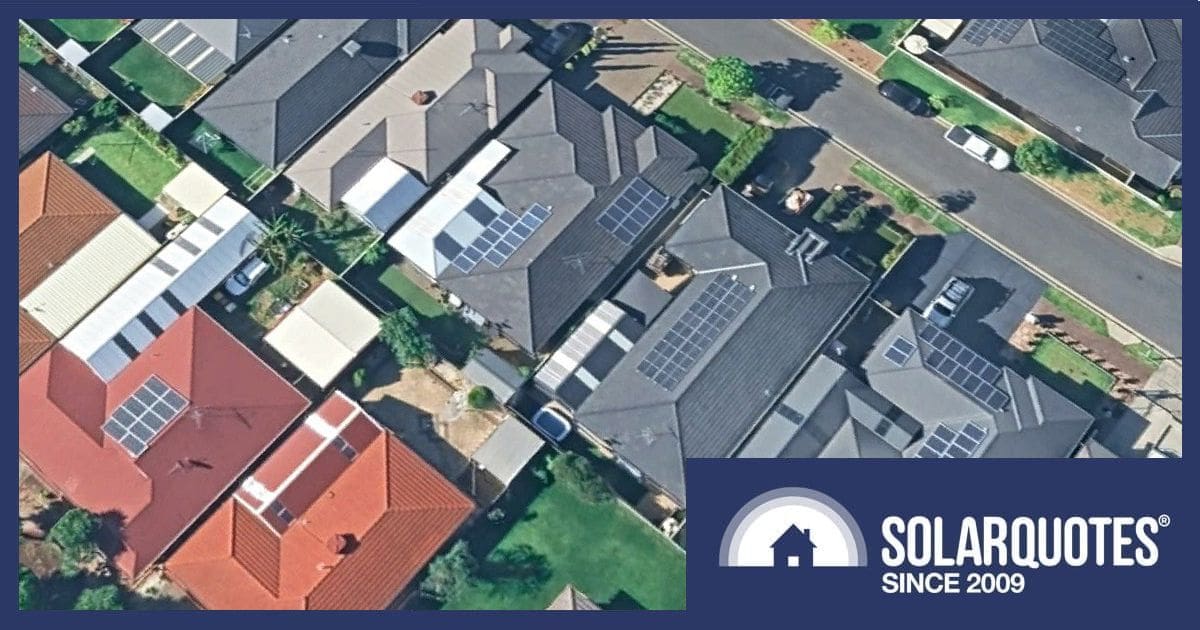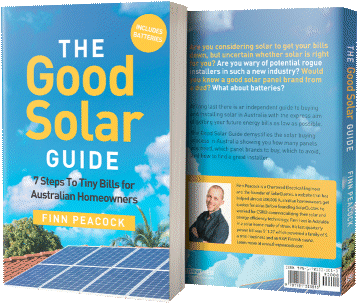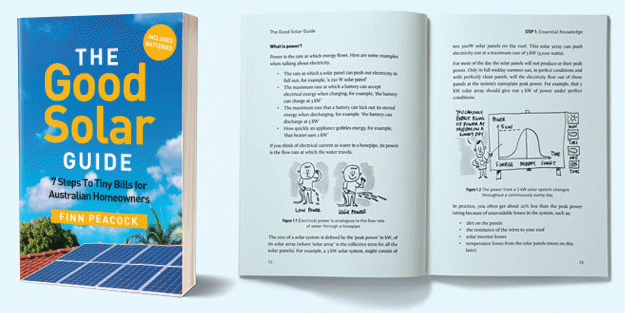
Australian homes with energy efficiency features have generally been selling for more than those that don’t for years. But how much more in 2025? A new report puts dollar figures on it.
Given rising energy prices, home buyers are increasingly looking for properties that cost less to run and sellers are responding to this by highlighting energy efficiency related features. According to Domain, 52.2% of all houses and 39.1% of units sold across Australia last year specifically mentioned energy-efficient (EE) features in the listing.
But do the vendors make much more on the sale – more than enough to cover the cost of installing these features?
Domain’s Sustainability in Property Report 2025 suggests that in addition to what the owners save themselves on energy, yes – and very much so in many cases. According to the report, energy-efficient houses are selling on average for 14.5% more than their inefficient counterparts, which is a difference of $118,000. Energy efficient units command a 12% price premium, or $75,000 on average.
The premium can vary greatly between capitals. The lowest EE premium for houses is in Darwin at 7.8% and the highest in Melbourne at 23.8% ($197,000 more). For units, the lowest is 8.3% in Adelaide and the highest is 19.2% in Perth (Hobart and Darwin weren’t included).
Interestingly, regional Australia has significantly higher premiums than capital cities – an average 21.3% for houses in regional areas combined and a whopping 30.8% for units.
At a town/suburb level, the percentage difference can be even more pronounced. In New South Wales’ Broken Hill for example, the energy efficiency price premium was pegged at $128,000; or 75.3%. But there are also some areas listed in the report where EE homes sell for less than comparable non-EE properties.
Still, the trend is clear.
“Energy‑smart design has shifted from nice-to-have to must-have,” says Domain chief of research and economics Dr Nicola Powell. “Two-thirds of Australian home buyers now say they would choose an energy-efficient home over a comparable standard dwelling when given a choice.”
What Home Buyers Want
There are many energy-efficiency improvements that can be made to a home. Some cost little, such as using LED light globes, and others thousands, such as solar power and home battery systems — and some even more.
According to the report, solar (encompassing rooftop panels and/or solar hot water systems) remains the dominant energy efficiency feature in Australian property sales, present on 37.6% of houses sold so far in 2025 — up from 26% ten years ago. But that’s around the same level as the proportion of houses in Australia with rooftop solar panels.
Some energy efficiency features can’t be installed post-build, such as house orientation. Built right, north-facing homes can provide better passive heating in winter and reduced cooling requirements during summer without additional gadgets and gizmos.
“This rarity — coupled with their inherent benefits — means that north-facing homes command the highest median price uplift of any EE feature, adding $375,500 nationally, and up to $615,000 in Sydney,” states the report.
A north-facing roof used to be very important for solar installation as well, but given the improved efficiency of solar panels coupled with a huge drop in the price of solar systems over the years, panel orientation isn’t such an issue any more.
But Domain says the increasing scarcity of north-facing homes means demand for other features will increase. And according to the company, while solar is the most common energy efficiency feature, it is not the most value-adding besides a north-facing structure. The highest premium is associated with homes with double glazing.
On a related note, while buying a home with solar panels already installed can be a great thing, it can also be a nightmare. Pick up some tips on what you should be checking.
Domain’s Sustainability in Property 2025 certainly has eye-popping figures, but also missing information as to the approach and how some of those numbers were arrived at – still, it makes for an interesting read. The full report can be viewed here.


 RSS - Posts
RSS - Posts



Hi Michael (and the entire SQ team) – some content on the SQ website about retro fitting energy efficiency to existing homes would be great. (Some of which has be done). But in particular,.for me, is what we with the old timber clad homes to make their themal performance better.
For example: can you practically insulate wall cavities, do batts out perform a pumped in product, is under roof insulation worthwhile if you have on ceiling insulation?
While I’m probably reading I’m the wrong spot (Domain) if I’m after sound statistical analysis, seems likely this report is implying a causal impact, while I suspect it is a correlational relationship. I.e. if you’ve got 10k to spend on solar, 5k for a nice heat pump hw system, whatever it is that double glazing costs, chances are you probably have a bit of spare coin, and live in a nice house. I’ve spent about 15k in the last 12 months on upgrades to my (rather nice) house- but guessing the actual ROI would be negative if I was going to sell tomorrow.
Homes with double glazing and modern lighting and solar power will typically have been done up in many other ways that are attractive to buyers. The idea that simply the energy efficient features are commanding the $118k premium is both unlikely and unstatistical. SolarQuotes should know better.
That’s the conclusion of Domain in their report. People would obviously pay more for a home that gives them energy bill savings, but energy-efficient homes offer so many other benefits: comfortable living temperatures, good natural light, lower environmental footprint, better sound insulation. The idea that buyers pay a significant premium for features that benefit their lives is not controversial.